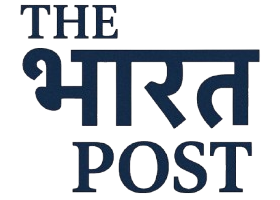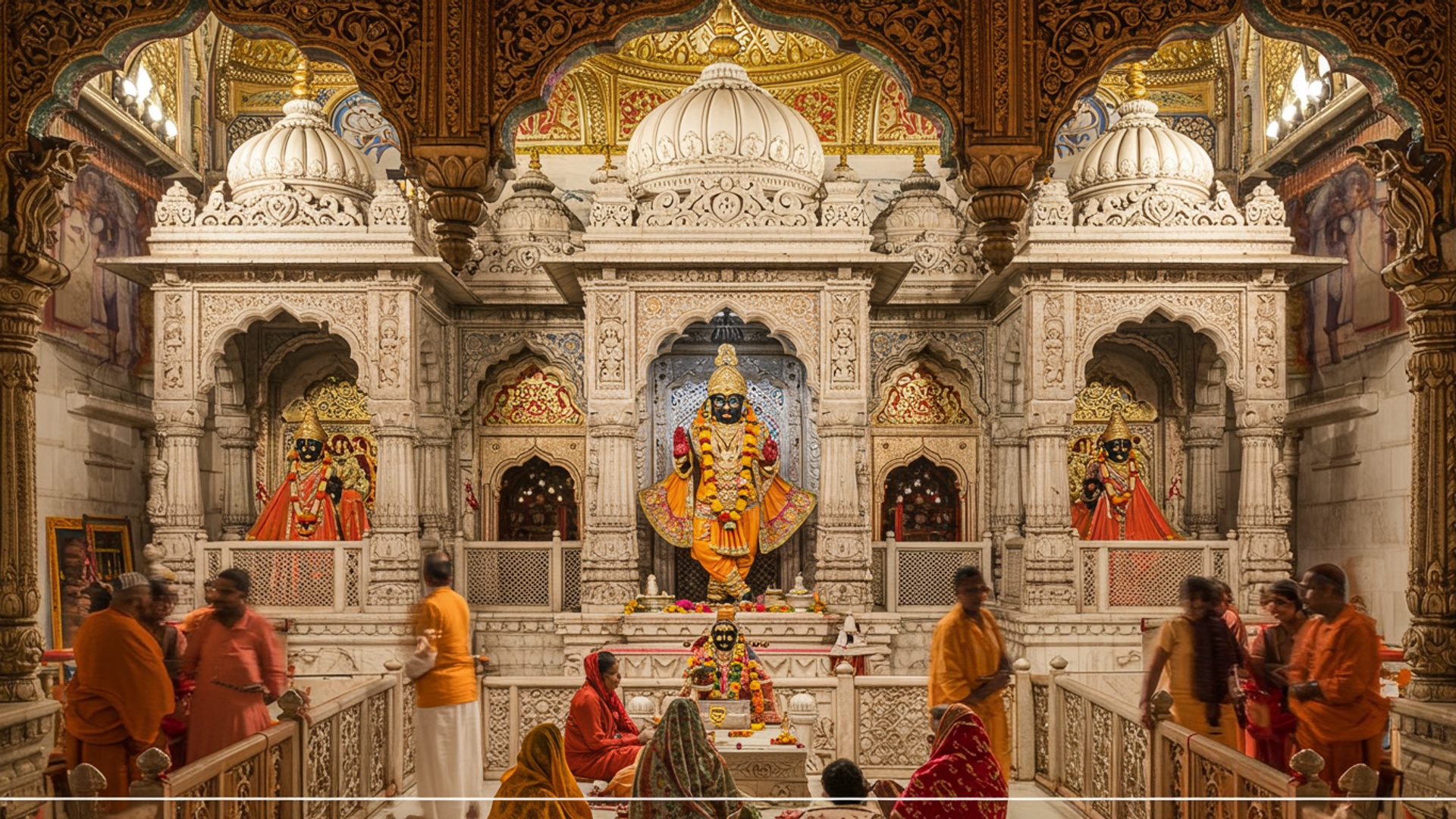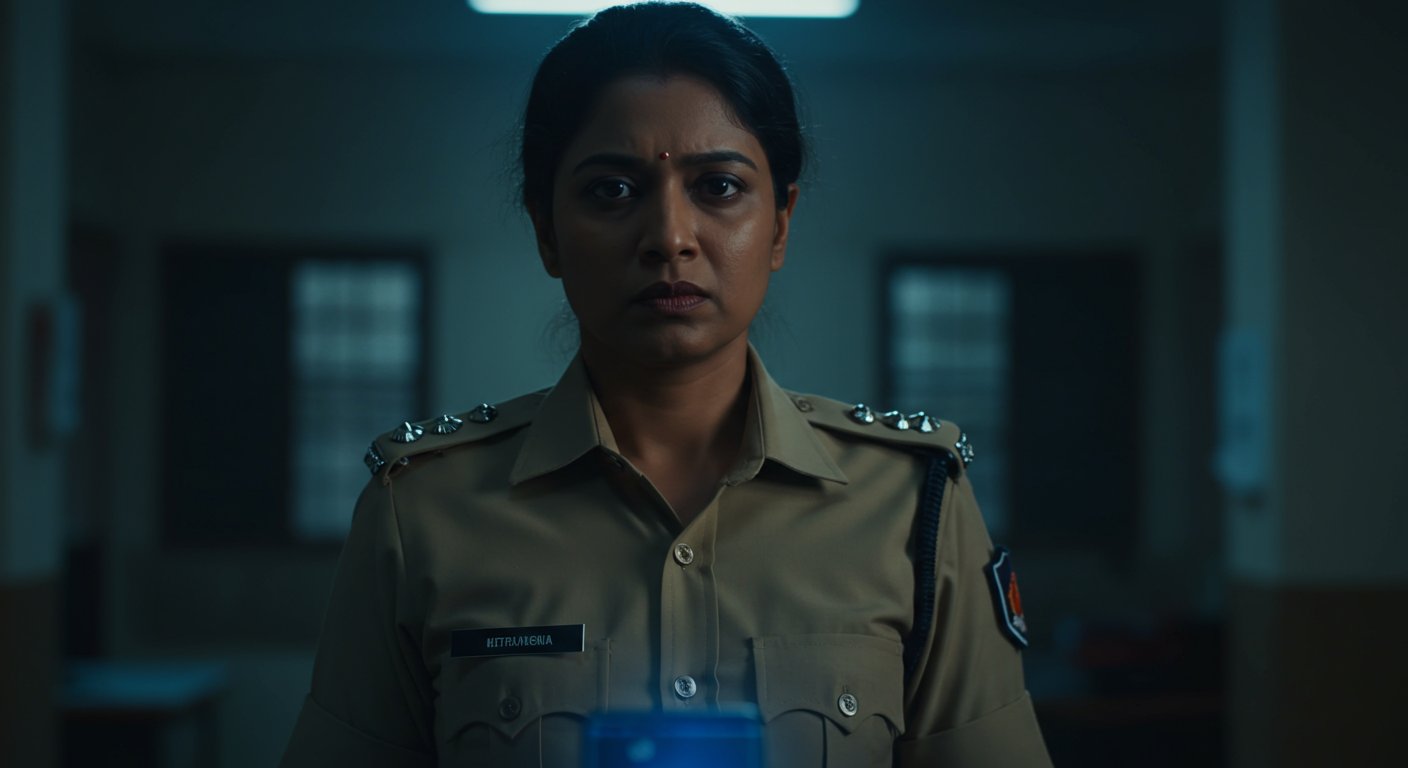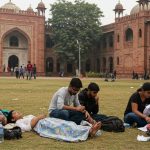A big debate rocks the UP Assembly today as the government puts forward a new plan for the Banke Bihari Temple Trust. This proposed law, which seeks to change how the famous Mathura temple is managed, immediately causes a big stir among lawmakers and the public. The move highlights deep divisions over how to best look after the holy site, with strong opinions on both sides now openly expressed in the state assembly.
About the Banke Bihari Temple
The Shri Banke Bihari Temple, located in Vrindavan, Mathura district, in the state of Uttar Pradesh, is a highly respected place of worship. It is dedicated to Banke Bihari, a form believed to be the combined presence of Lord Krishna and Radha. The temple’s story goes back to the 16th century with the saint and musician Swami Haridas. The deity was first worshipped in Nidhivan. The current temple building was constructed around 1864. The Banke Bihari temple is known for its unique customs. Unlike other temples, it does not use bells during worship, as it is believed the sound might disturb the deity. Also, the view of the deity, known as “darshan,” is not continuous. Curtains are drawn closed and opened frequently, as it is believed that if one stares too long into the deity’s eyes, they might lose their awareness. the deity might decide to go home with the devotee, leaving the temple empty. Over the years, this ancient temple has grown in importance, attracting large numbers of visitors.
Reasons for the Proposed Bill
The Uttar Pradesh government has put forward a new bill to manage the Banke Bihari Temple. The need for this law became clear after a serious incident on August 20, 2022, when two devotees died due to severe overcrowding during a festival. The temple is built on about 870 square meters of land, with roughly 365 square meters used as a viewing area for devotees. The paths leading to the temple are very narrow, causing great difficulty for the thousands of devotees who visit every day. Officials state that a large number of people visit the temple, with daily attendance ranging from 20,000 to 30,000. increasing to two to three lakh on weekends. The government believes there is an urgent need for better crowd management and improved facilities to handle these numbers. There have also been long-standing disputes regarding the temple’s management. Records show conflicts between two main groups of temple administrators, the Raj Bhog and Shayan Bhog, dating back to 1938. These disputes led to the creation of a temple managing committee. Later, a local court official, the Munsif of Mathura, was asked to oversee some temple affairs due to renewed disagreements in 2016. Moreover, concerns have been raised about the handling of temple funds and a lack of action in providing necessary facilities for devotees. The government’s goal with this new law is to ensure overall development of the temple, make its financial operations clear. preserve its ancient customs. This plan is similar to development projects carried out at other essential religious sites like Ayodhya and Kashi.
Key Parts of the New Bill
The Uttar Pradesh Shri Banke Bihari Ji Temple Trust Bill 2025 was recently presented in the state assembly. This new bill aims to replace an earlier temporary order, known as an ordinance, which was issued on May 26, 2025. The bill calls for the creation of an official trust that will have full control over all offerings, donations. all movable and immovable properties of the temple. This includes cash, bank drafts, cheques, jewelry. any gifts made to the deity or the temple. The trust will be responsible for setting the times for viewing the deity, hiring priests, deciding their salaries. ensuring the safety of all visitors. The trust will also be in charge of development projects for the temple complex and a proposed corridor around it. For these projects, the trust will seek advice from experts in areas like archaeology, engineering. architecture. The new trust will have 18 members. Of these, 11 will be chosen by the government. seven will be ex-officio members, meaning they hold a position because of their official role. The 11 chosen members will include:
- Three respected people from Vaishnav traditions, groups, or religious centers (who can be saints, teachers, or heads of religious places).
- Three respected people from other Sanatan Dharma traditions (also including saints, teachers, or scholars).
- Three notable individuals from any branch of Sanatan Dharma, who could be scholars, educators, business people, professionals, or social workers.
- Two members from the Goswami tradition, who are direct descendants of Swami Haridas. One will represent those who perform the Raj-bhog service. the other will represent those who perform the Shayan-bhog service.
All chosen members must be practicing Sanatani Hindus. If any ex-officio member is not a Hindu, a junior officer will take their place. The term for the chosen members will be three years. The seven ex-officio members will include:
- The District Magistrate of Mathura.
- The Senior Superintendent of Police.
- The Municipal Commissioner.
- The Chief Executive Officer (CEO) of the Uttar Pradesh Braj Teerth Vikas Parishad.
- The Chief Executive Officer (CEO) of the Banke Bihari Temple Trust.
The Chief Executive Officer of the trust will be an officer of Additional District Magistrate (ADM) rank. The trust will have the power to buy movable or immovable property worth up to ₹20 lakh on its own. For purchases exceeding this amount, government approval will be needed. The government has promised that all religious customs, festivals, rituals. ceremonies will continue without any changes. The bill also outlines plans for world-class facilities for devotees, such as:
- Centers for distributing holy food (prasad).
- Separate viewing paths for senior citizens and people with disabilities.
- Drinking water stations and resting benches.
- Kiosks for managing queues and access.
- Cow shelters, community kitchens (Annakshetra), regular kitchens, hotels, inns, exhibition halls, canteens. waiting rooms.
The Ongoing Debate
The tabling of the bill in the Uttar Pradesh Assembly on Wednesday, August 13, 2025, during the Monsoon session, has created much discussion. Even though the bill was passed by a voice vote in the UP Assembly, the matter is still being reviewed by the Supreme Court of India. The Supreme Court had previously put a temporary halt, or “stayed the operation,” on the ordinance related to the temple trust on August 8, 2025. This stay will remain until the High Court decides on the validity of the law. The Supreme Court also suggested setting up an interim committee to manage the daily affairs of the temple. This committee would be led by a retired High Court judge and would include local officials and members of the Goswami community. The Supreme Court had also expressed concerns about the Uttar Pradesh government’s swiftness in issuing the ordinance. It questioned the government’s method of obtaining an order on May 15, which allowed the use of temple funds for land acquisition for a corridor project, without properly hearing from all involved parties. The Supreme Court later changed its May 15 order to protect the rights of existing stakeholders.
Perspectives of Different Groups
The state government says the new trust will bring modern management to the temple while keeping its old traditions safe. They believe it will improve the experience for devotees significantly. Uttar Pradesh Chief Minister Yogi Adityanath has said that discussions will be held with all relevant groups about the proposed corridor. The government has also stated that the purpose of the trust is not to take over the temple’s properties but to ensure clear financial records. But, the Goswami community, who have been the traditional caretakers of the temple for hundreds of years, have strongly opposed the government’s move. They consider it an attempt to take away their traditional rights and livelihood. They argue that the temple is a private religious institution and that the government should not interfere without following proper legal procedures. Some Goswami priests even stated that they would take away the deity if the government did not reconsider its decision. They have also voiced concerns about the proposed corridor, fearing that it might lead to displacement and loss of income for local shopkeepers and businesses. Despite the bill passing in the assembly, the Goswami community has continued to express its strong opposition. The government maintains that the development plans are meant to provide world-class facilities and better administration for the thousands of devotees who visit the temple daily. They aim to ensure that all pilgrims have a pleasant experience. ![]()








